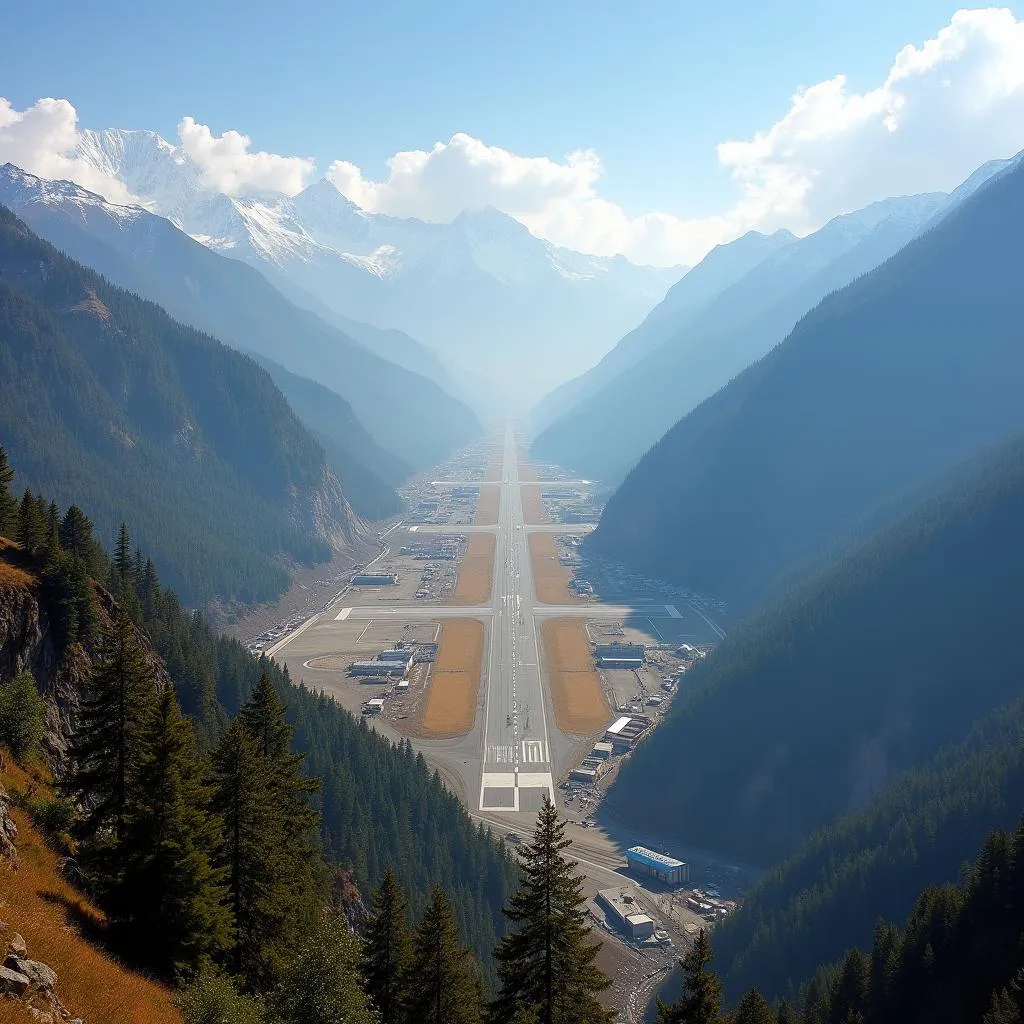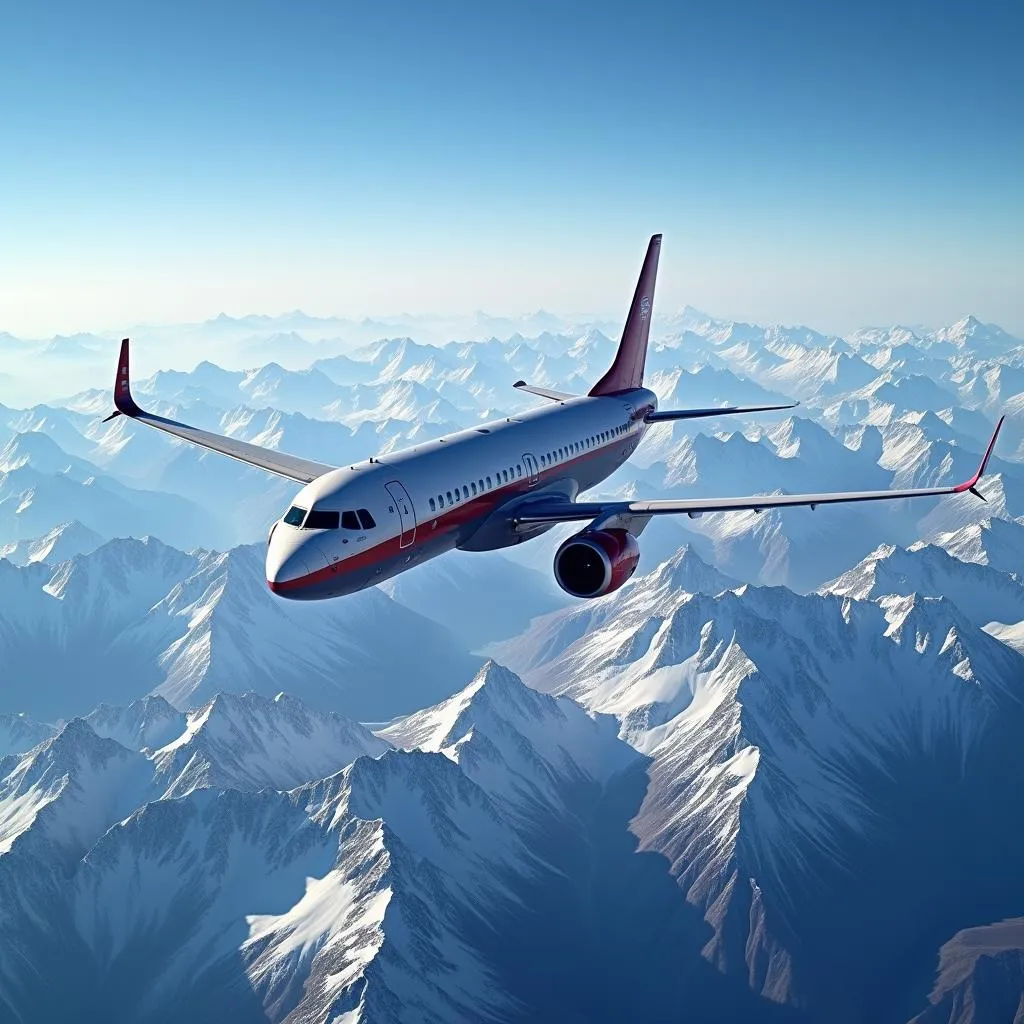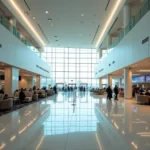Nepal, home to the towering Himalayas and breathtaking landscapes, also boasts some of the world’s most dangerous airports. The country’s challenging terrain and unpredictable weather conditions create a unique set of obstacles for pilots and passengers alike. This article delves into the factors that contribute to the reputation of Nepal’s dangerous airports and explores the specific challenges they present.
 Tenzing-Hillary Airport in Lukla, Nepal
Tenzing-Hillary Airport in Lukla, Nepal
The Thrill and Risk of Flying in Nepal
Nepal’s allure lies in its dramatic landscapes, with mountains dominating the horizon. While this makes for spectacular views, it also means that airports are often perched on precarious mountain slopes or nestled within deep valleys. Short runways, limited navigational aids, and the ever-present threat of sudden weather changes add to the complexity of flying in this region.
Why Are Some Airports in Nepal Considered Dangerous?
Several factors contribute to the challenging nature of Nepal’s airports. Let’s break down the key reasons:
- High Altitude: Many airports are situated at high altitudes, where the air is thinner, affecting aircraft performance during takeoff and landing.
- Mountainous Terrain: The surrounding mountains create unpredictable wind patterns and downdrafts, posing significant challenges for pilots, especially during landing.
- Short Runways: Limited space in mountainous regions often translates to shorter runways, leaving pilots with little margin for error.
- Weather Variability: Nepal’s weather can change rapidly, with fog, rain, and snowstorms appearing suddenly and affecting visibility.
- Limited Infrastructure: Some airports lack sophisticated navigation systems and rely on visual approaches, further increasing the difficulty of landing in adverse conditions.
Nepal’s Most Notable “Dangerous” Airports
While several airports in Nepal are considered challenging, a few stand out due to their unique locations and the technical skills required to navigate them:
1. Tenzing-Hillary Airport (Lukla)
Often topping the list of the world’s most dangerous airports, Tenzing-Hillary Airport serves as the gateway to Mount Everest. Its runway is incredibly short, measuring just 527 meters (1,729 feet) with a significant slope and a sheer drop at one end.
2. Jomsom Airport
Located at an elevation of 2,800 meters (9,200 feet), Jomsom Airport is known for its extreme wind conditions, particularly during the afternoon. The airport’s location in a narrow valley adds to the turbulence, making landings and takeoffs a true test of pilot skill.
 Jomsom Airport in Nepal
Jomsom Airport in Nepal
3. Manang Airport
Serving the Manang District in north-central Nepal, this airport is one of the highest in the world at an elevation of 3,932 meters (12,894 feet). The thin air at this altitude affects aircraft performance, requiring skilled pilots and careful calculations.
Safety Measures and Regulations
To mitigate risks, Nepal’s Civil Aviation Authority has implemented stringent safety regulations for airlines and pilots operating in the region. These measures include:
- Experienced Pilot Requirements: Pilots require specialized training and a minimum number of flight hours in mountainous terrain to operate in Nepal.
- Aircraft Suitability: Only specific types of aircraft with suitable performance capabilities are allowed to operate at these challenging airports.
- Strict Weather Monitoring: Flights are closely monitored for weather changes, and delays or cancellations are common to ensure safety.
The Allure of Nepal’s Airports
Despite the inherent risks, these airports offer an unparalleled sense of adventure and provide a vital link to remote communities in Nepal. For many travelers, the thrill of landing at one of these airports is an integral part of the Nepal experience.
FAQs About Nepal’s Dangerous Airports
1. Are these airports safe for passengers?
While these airports present unique challenges, Nepal has strict safety regulations in place. Airlines operating in the region prioritize passenger safety and employ experienced pilots trained for these conditions.
2. What happens if the weather turns bad during a flight?
Flights are constantly monitored for weather changes. If conditions deteriorate, flights may be delayed or cancelled to ensure passenger safety.
 Airplane flying over the Himalayas in Nepal
Airplane flying over the Himalayas in Nepal
3. Are there alternative ways to reach the destinations served by these airports?
While some destinations can be reached by road, the journeys are often long and arduous. Air travel remains the most efficient and often the only practical way to access remote areas of Nepal.
4. What should passengers expect when flying to these airports?
Passengers should be prepared for potential delays due to weather and understand that flights to these airports may involve turbulence and unique landing approaches.
5. Are there any specific precautions passengers should take?
It’s advisable to check weather conditions before your flight and pack light to minimize baggage weight restrictions. Consulting with your airline or tour operator about specific recommendations is always a good idea.
Exploring Nepal’s High-Flying Adventures
Nepal’s dangerous airports are a testament to human ingenuity and the enduring spirit of adventure. While the risks are real, the country’s commitment to safety and the expertise of its pilots make these airports accessible while offering a glimpse into the raw beauty and challenges of this remarkable region.
For those seeking a thrilling and unforgettable journey, flying into one of Nepal’s most dangerous airports is an experience unlike any other. It’s a reminder that sometimes, the most rewarding journeys take us to the edge of our comfort zones.
Looking for more insights into challenging aviation environments? Check out our article on the most dangerous airport in India.
Need help planning your next adventure or have questions about air travel? Don’t hesitate to reach out! Contact us at +13089626264, email us at [email protected] or visit our office located at 404 Bothwell St, Oxford, NE 68967, USA. Our dedicated customer support team is available 24/7 to assist you.

